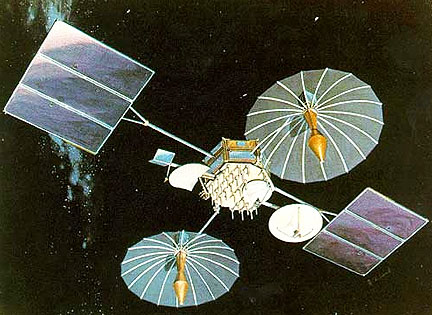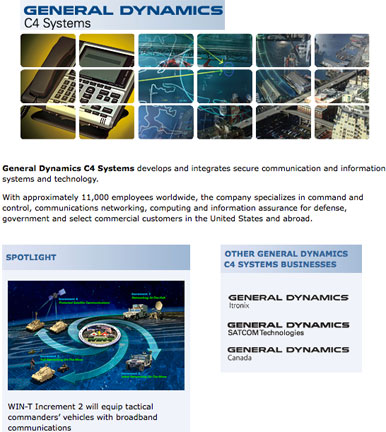
TDRS-7 — A geostationary Tracking and Relay Sattelite parked on 150 degrees West longitude for testing F- and Ku-bands between spacecraft and ground. When first launched, the TDRS satellites were the largest, most sophisticated communications satellites ever built. Image courtesy of NASA.
NASA has awarded the option for the Space Network Expansion-East, under the Space Network Ground Segment Sustainment contract, to General Dynamics C4 Systems of Scottsdale, Ariz. The cost-plus-award fee, indefinite-delivery, indefinite-quantity option has a total estimated value of $32.7 million. The period of performance is from March 1, 2011, through Sept. 2, 2015. The base contract was awarded on June 15, 2010. The Space Network Ground Segment is part of NASA's Space Network. The agency's Tracking and Data Relay Satellites (TDRS) comprise the space segment. The network provides the resources for global space-to-ground telecommunications and tracking coverage for low and near-Earth orbit robotic and human spaceflight missions.
Under the option, General Dynamics will implement the ground segment at NASA's new ground terminal in Blossom Point, Md., to enable the Space Network to continue to deliver high quality services and meet stakeholder requirements. The Space Network Ground Segment Sustainment effort includes replacing aging systems at existing Space Network ground segments; creating a more flexible and expandable architecture; facilitating the integration of NASA's Space Communications and Navigation networks; addressing customer requirements and advances in technology; and implementing new methods and capabilities for using the TDRS to support Space Network user spacecraft. The effort also includes expanding and improving the methods for Space Network user control centers to interface with the Space Network Ground Segment for data and service planning and control; and maintaining long-term operational performance, reliability and maintainability.


